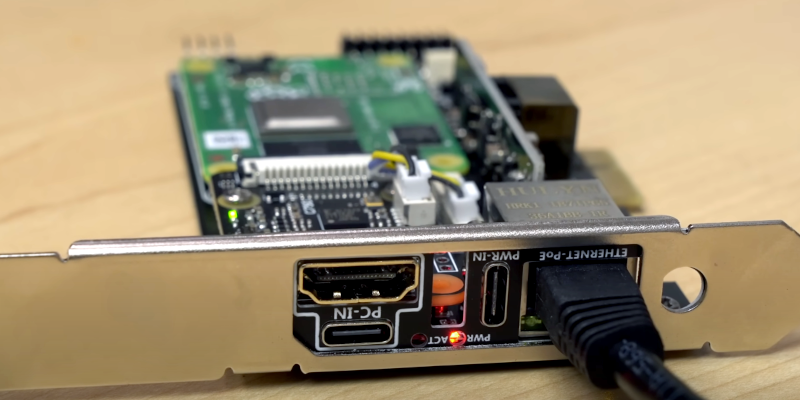Raspberry Pi Grants Remote Access via PCIe (Sort Of)

[Jeff] found a Raspberry Pi — well, the compute module version, anyway — in an odd place: on a PCI Express card. Why would you plug a Raspberry Pi into a PC? Well, you aren’t exactly. The card uses the PCI Express connector as a way to mount in the computer and connect to the PC’s ground. The Pi exposes its own network cable and is powered by PoE or a USB C cable. So what does it do? It offers remote keyboard, video, and mouse (KVM) services. The trick is you can then get to the PC remotely even if you need to access, say, the BIOS setup screen or troubleshoot an OS that won’t boot.
This isn’t a new idea. In fact, we’ve seen the underlying Pi-KVM software before, so if you don’t mind figuring out your mounting options for a Raspberry Pi, you probably don’t need this board. Good thing too. Judging by the comments, they are hard to actually buy — perhaps, due to the chip shortage.
While it seems seductive to have a remote solution that doesn’t depend on fiddly software — or even what operating system you are using — [Jeff] notes that latency is relatively high, so you probably won’t be happy with it for any gaming or video. But that’s not really what it is for.
It did make us think, though. The PCI Express has 12V and 3.3V power and ground connections. Some motherboards even provide 3.3V when the computer is off. What else could you mount inside the computer with one of these things? Or what else could you do with this Pi card? Networked USB maybe?
We’ve seen a Pi get surgery to include a PCI bus, too. Or, you can opt for the easier surgical method. While plugging one of these KVM boards into a modified Pi would be pointless, we also think it would be amusing.
Post a Comment